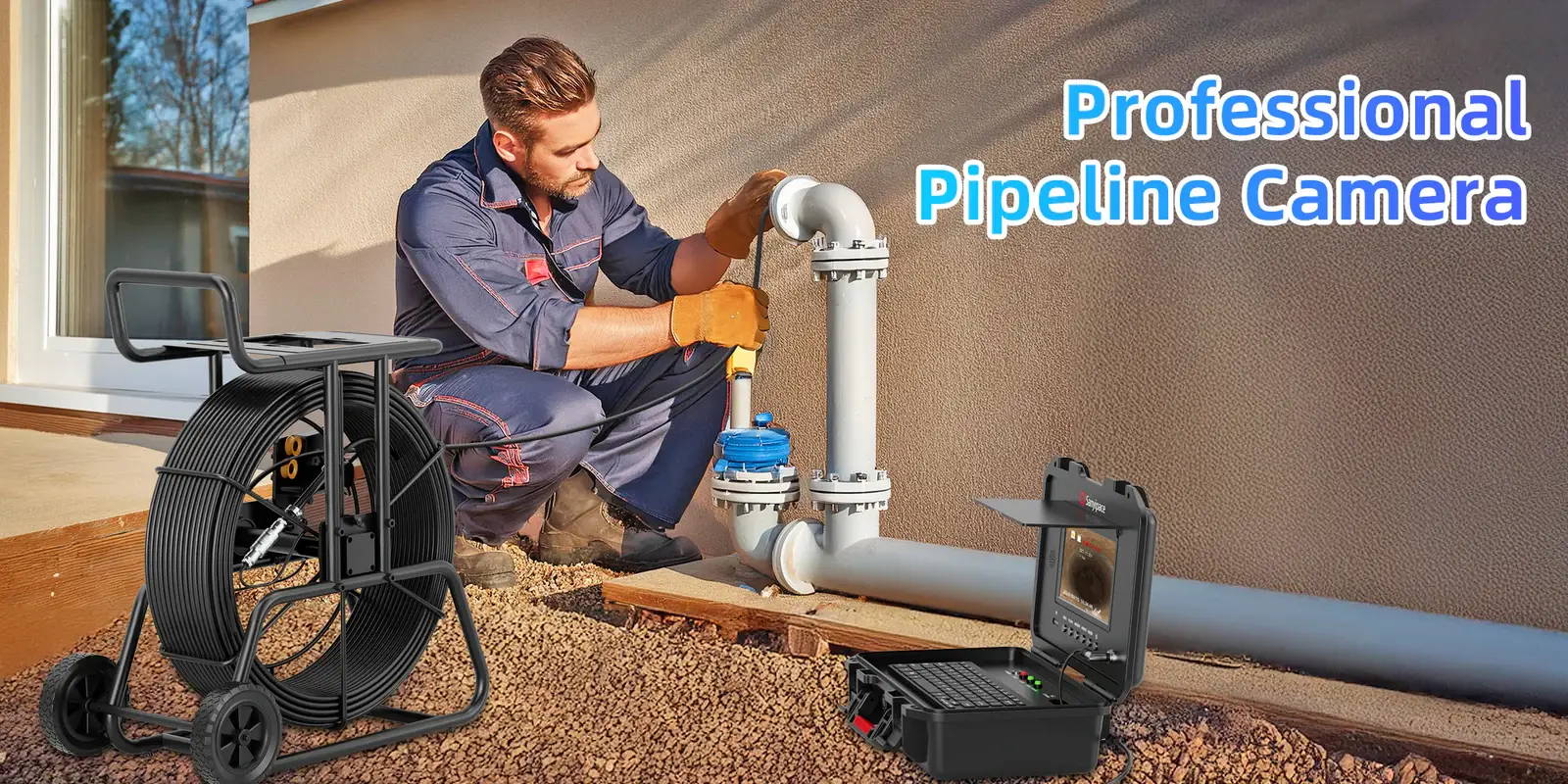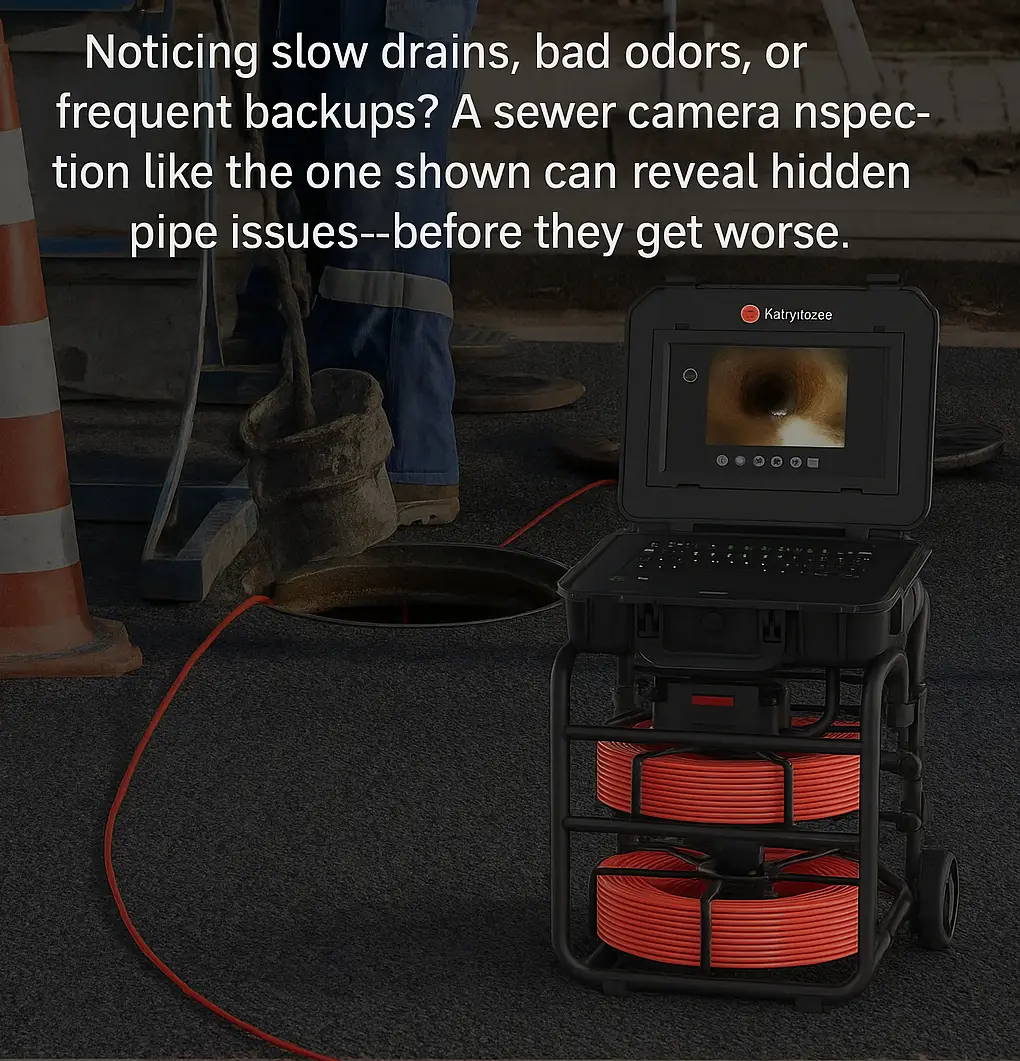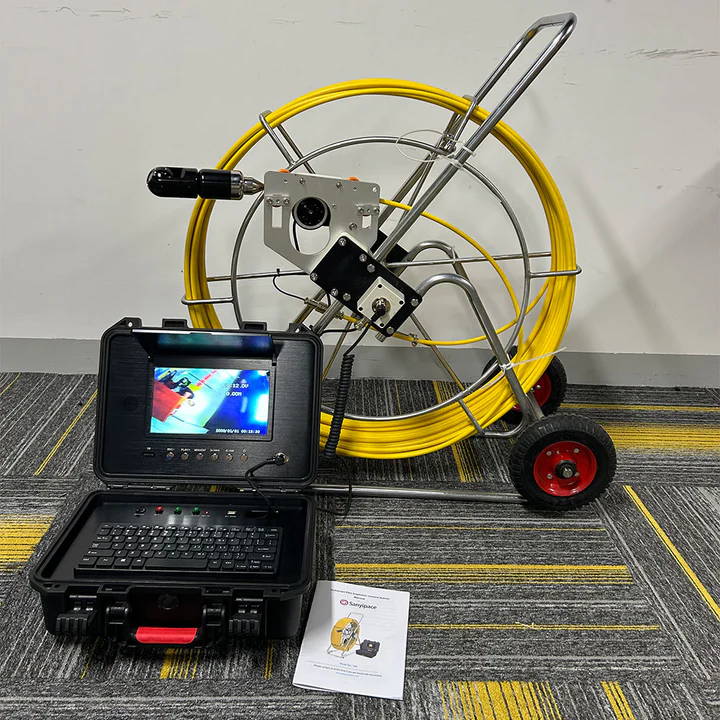Is Sewer Camera Inspection Worth It?
When it comes to home maintenance, most people focus on the visible aspects of the house—such as the roof, windows, HVAC systems, and paint. One of the most overlooked areas is the sewer line, a crucial part of your home’s plumbing system.
If you’ve ever experienced slow drainage, clogs, frequent backups, or unpleasant odors, you may be wondering: Is a sewer camera inspection worth it?
The answer is a definite yes!
In this blog post, we’ll examine the benefits of sewer inspection camera inspections, how they work, and when you might need one—so you can decide whether it’s the right solution for your plumbing concerns.
What is Sewer Camera Inspection?

- Tree root intrusion
- Pipe misalignment or collapse
- Grease buildup or clogs
- Corrosion and cracks
- Foreign object blockage
- Slow drainage and backups
Is Sewer Camera Inspection Worth It?
Yes, regular sewer camera inspections can help us detect potential issues and save dollars in the pipeline system early, such as blockages, tree root damage, cracks, or corrosion.
By identifying these problems before they escalate into costly emergencies, you can save thousands of dollars in expensive repairs and yard restoration costs caused by excavation. It is a wise preventive investment that provides long-term peace of mind.
Benefits of Sewer Camera Inspections
✅ 1. Early Problem Detection
✅ 2. Save on Repair Costs
✅ 3. Non-Invasive and Accurate
✅ 4. Ideal for Buyers and Sellers
How Do I Know if I Need a Sewer Camera Inspection?

- Slow Drains: If water drains slowly in sinks, tubs, or showers, it could mean a blockage or damage in the line.
- Frequent Clogs: Recurring clogs, especially in multiple drains, suggest a deeper issue in the main sewer line.
- Sewage Backups: If wastewater backs up into your home, especially in the basement or lower-level fixtures, you need an inspection right away.
- Unpleasant Odors: Smelling sewage indoors or near drains could mean there’s a crack or leak in the system.
- Lush or Soggy Patches in Yard: Unexpectedly green or wet spots could signal a leaking underground pipe.
- Old or Large Trees Nearby: Tree roots are a common cause of pipe damage. If you have mature trees near your sewer line, it’s smart to check for intrusion.
How to Perform a Sewer Camera Inspection

You don’t need to be a professional to inspect your sewer. As long as you have the equipment set up and access to an entry point, you can perform a basic inspection yourself. Here are the main steps to follow:
1. Locate the Access Point
Find the cleanout access—this is usually a capped pipe located outside your home, in a crawlspace, or the basement.
It connects directly to your main sewer line and is the ideal place to insert the camera.
2. Insert the Camera
Attach a high-resolution, waterproof sewer camera to a flexible push cable. Slowly feed the camera into the pipe.
This allows you to inspect the interior of your sewer line without any digging or structural damage.
3. Inspect the Pipe in Real Time
4. Use the Meter Counter to Track Distance
Most sewer inspection cameras come equipped with a meter counter (also known as a distance counter). This feature displays how far the camera has traveled inside the pipe, helping you pinpoint the exact location of any problems.
If your counter isn’t showing distance properly or stops working during inspection, check out our guide: Why Isn’t My Sewer Camera Meter Counter Working?
5. Identify and Mark Problem Areas
If any issues are detected, use a locator tool together with the meter counter reading to determine the exact depth and location of the issue. Mark these areas above ground to make repairs easier and more precise.
6. Review and Recommend
After completing the inspection, save the video recording. This footage is extremely helpful when consulting with a plumber or contractor, as it provides visual proof of the issue and speeds up the repair process.
Finally
Yes, it’s worth getting your sewer camera inspected regularly. A sewer camera inspection is an effective and cost-effective preventative measure that helps homeowners detect problems such as pipe blockages, leaks, or structural damage early, avoiding costly repairs and unexpected situations in the future.
Whether it’s negotiating a home purchase, maintaining aging pipes, or responding to early warning signs such as abnormal drainage, the results of an inspection can provide critical evidence to ensure the safety of your investment and peace of mind.










